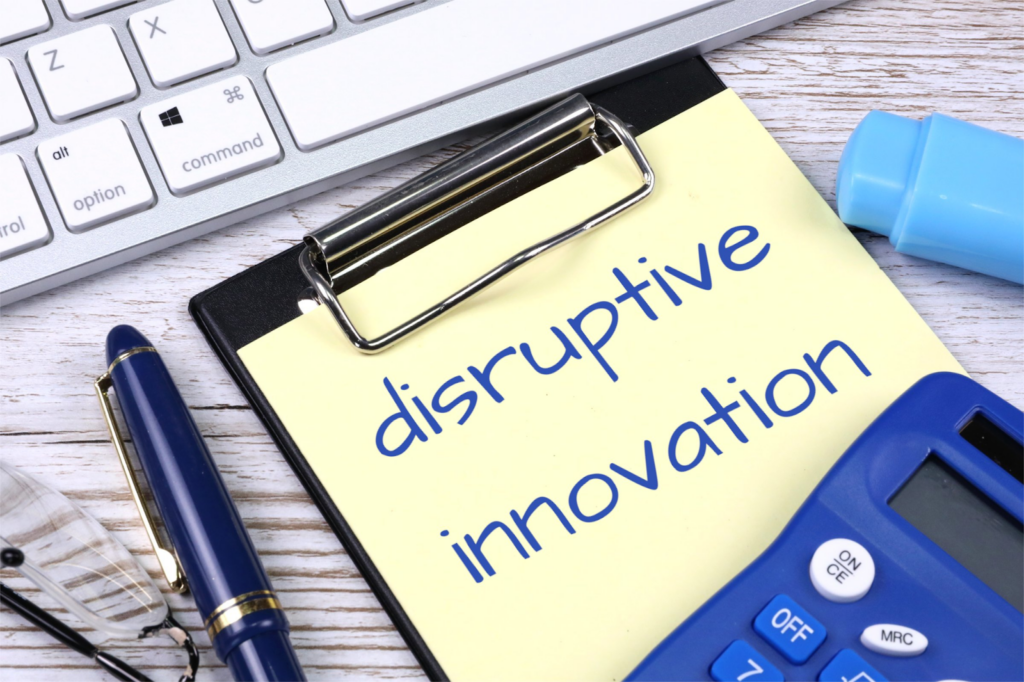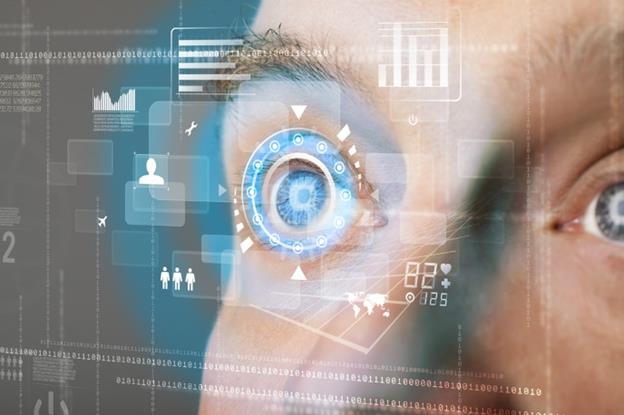Top 5 Disruptive Technologies Shaping Industries
By Alex Carter on November 1, 2024
Every year, our personal and professional lives undergo staggering changes. Most of them are caused by the never-ending development of technologies: they simplify the way we work, strengthen our security, and make us compete with their analytical abilities.
Disruptive technologies stand out in particular. They have the power to reshape the reality we know and create countless new opportunities in different fields.
Find out what makes some tech disruptive, see five key examples, and discover what else the future might have in store.

What is Disruptive Technology?
Some people think that “disruptive” means bothersome, but the reality is more complicated. Disruptive technologies are groundbreaking innovations that challenge existing protocols and transform entire industries. They don’t just improve our life — they reshape it, creating new trends and affecting the way we do business.
It might take time for a technology to gain a “disruptive” status. At first, people tend to be resistant to something that threatens their routine — they are reluctant to embrace innovations and actively reject them. However, with time, they begin to see the positives, and little by little, such technologies acquire global acceptance.
See the top examples of disruptive technologies and think about what kind of impact they’ve had on your life in particular.
Top 5 Disruptive Technologies
We prepared five examples of disruptive technologies. Check their breakdown and learn what earned them a “disruptive” status.
Artificial Intelligence (AI) and Machine Learning

AI caused a huge stir when it first entered our lives. In 2021, 47.5% of people called it the most impactful disruptive technology, and for a good reason. First, let’s consider its key impacts.
- New automation opportunities. AI has given people a chance to automate a huge volume of boring tasks, from administrative duties to quality checks and logistics;
- High-level predictive analysis. Thanks to AI’s ability to analyze all the info quickly and see patterns where a human might miss them, businesses now have access to instant forecasts and fact-based recommendations;
- Enhanced customer experiences. Few people can imagine their lives without AI helpers and chatbots now; AI has enabled them to find answers to their questions within seconds;
- Medical breakthroughs. AI helps perform surgeries, run large-scale diagnostics, and even detect diseases that the medics struggle with identifying right away;
- Progress in Natural Language Processing. After years of evolution, AI can now easily recognize and process natural language, which powers AI helpers like Siri and helps us locate relevant answers to our queries.
What makes AI a disruptive type of tech? Surgeons can rely on AI-powered robots to treat their patients; website owners can get AI tips and improve their database performance on this basis, and tons of info from different sources can be synthesized in a blink. AI has changed how our industries work dramatically.
Human operations have become more efficient on a global scale. Now, we can focus on doing high-value tasks while leaving the boring identical duties to AI. Its impact has reached every single industry, so it’s rightfully considered a leader among disruptive technologies.
Blockchain Technology

Some people consider blockchain a complex concept to grasp, but all of them benefit from it at least occasionally. In simple words, blockchain is a decentralized way of making secure transactions. It doesn’t need the involvement of any third parties, which makes the processing and verification of payments as safe as these processes can be.
These are the perks that blockchain technology has introduced to our lives:
- Enhanced transparency. All blockchain transactions are recorded on a tamper-proof ledger and leave transparent records in their wake, so the possibility of fraud is next to non-existent;
- No financial intermediaries. Before the blockchain, all payments had to go through the bank first. Now, we can do instant peer-to-peer transactions, with no annoying parties popping up in the middle;
- Smart and quick contracts. Blockchain supports self-executing contracts, so you can set up specific conditions, and as soon as they’re met, your transaction will be processed automatically;
- Improved supply chain management. Blockchain boosts logistics by allowing us to track the movement of goods from the stage of production to delivery.
Why is blockchain considered disruptive? Because after its emergence, the system of transactions has changed for good. Cryptocurrencies function on its basis, giving us an opportunity to make or receive payments quickly, anonymously, and without hassle.
In addition, all other financial-related processes have become simpler and safer. If you work on Upwork and hope to get automatic payments when your balance hits a certain amount, you can activate this feature in minutes. People who want to check the validity of digital records can get instant access to them — all of this makes blockchain an inevitable part of most financial operations.
Quantum Computing
Another complex concept that has been influencing us all is quantum computing. Now, instead of handling one process at a time, some computers can process multiple layers of info simultaneously. Such a leap has become a revelation for the financial, pharmaceutical, and scientific sectors.
Take a look at the key features of quantum computing:
- Quick problem-solving. Quantum computers can complete the most challenging request in a couple of minutes; as a comparison, regular computers require ages to come even close to the right answer;
- Better security. It’s possible that our current encryption methods will become redundant soon, as quantum key distribution has the power to create security systems that literally cannot be penetrated by outsiders;
- Medical breakthroughs. Quantum-level simulations of molecular interactions help our scientists in the development of medicine and its subsequent customization to each specific patient’s needs;
- Optimized financial modeling. Quick quantum algorithms boost risk analysis, making it faster and more reliable due to their astonishing speed.
What makes quantum computing a disruptive technology? Its groundbreaking potential to solve complex problems in a matter of minutes.
Sure, such computers are still under development, so regular people can’t use them daily. However, they already benefit from services that rely on quantum mechanisms.
The element that makes quantum computing stand out from other similarly impactful technologies is its newness. It remains at the stage of early development, so we can expect to see more advancements, benefits, and widespread usage in the future.
5G and Next-Generation Connectivity
We all have heard about 5G, but few people wonder about the specifics of this innovative concept. After all, we already have devices with excellent connectivity — do we really need something even better?
As the appearance of 5G has shown, there is still plenty of room for improvement. These are the features you can expect from using this new, enhanced type of connectivity:
- Real-time communication for vehicles. Self-driving cars are still a rarity, but with 5G, more such vehicles can appear. Improved connectivity allows them to get instant vehicle-to-vehicle and vehicle-to-infrastructure updates, which enhances their safety;
- Innovative approach to remote work. High-speed connectivity with low latency contributes to flawless video conferences, online meetings, and collaborations, letting people exchange instant info without leaving the comfort of their homes;
- New telemedicine opportunities. 5G-powered telemedicine is behind the surgeries done by robots and AI patient monitoring: the nurses get updates about the slightest changes the moment they happen;
- Large IoT networks. Smart homes involve multiple devices; 5G unites all of them across multiple locations, creating a whole network that functions in real time, which increases people’s safety;
- Better rural connectivity. Even in 2025, some populations still lack access to the Internet; 5G bridges this gap, forming a connection where it never existed before and generating more personal, professional, and educational opportunities.
Why is 5G disruptive? Our world is going to become even more interconnected thanks to this technology. Think about smart cities: an instant flawless data exchange can result in immediate problem detection and solution.
For example, if a system detects the signs of pollution in the city, an alert is instantly given. It is transmitted and processed with the help of 5G connectivity. Such impressive speed means that a system will either automatically alert the citizens and start solving the problem or warn the authorities instead, requiring them to take action.
There are many ways in which 5G can reshape our lives, supplying us with the kind of connection we never dreamed of encountering.

Biotechnologies and Genetic Engineering
This type of disruptive technology is older than the ones you’ve seen on our list before. Biotechnology has been developing for many years, with new advancements taking place almost annually and bringing something new and convenient into people’s lives. This is what biotechnologies and genetic engineering, in particular, include:
- Gene therapy. We all have different genetic profiles and experience unique problems; gene therapy, courtesy of biotechnologies, offers personalized medicine with the potential to slow the progression of Alzheimer’s and Parkinson’s diseases;
- GMO emergence. Food production has experienced significant changes due to GMO, which allows the creation of crops resistant to pests, terrible weather, and even widespread diseases;
- Lifespan extension. Genetic engineering brings the possibility of destroying hereditary diseases and extending the number of years we have by allowing so-called gene editing;
- Climate solutions. The creation of genetically engineered microorganisms means that, at some point, we’ll be able to remove the shocking amounts of plastic waste simply and quickly, improving the climate and reducing pollution.
So, what makes biotechnologies fall into the category of disruptive technologies? As you’ve probably figured out, it’s all about future possibilities.
Right now, most biotechnologies are used on a pretty small scale, but the situation can change at any moment. Scientists can already modify our genes and lessen the impacts of climate change. In the near future, most people will be able to shape the health of their future children by making certain they have no diseases or removing them from their genes if they do.
What Does the Future Hold?
At this point, we can only imagine what kind of innovations are going to grace our world with their presence in the following decade. However, we can observe some trends and make the corresponding conclusions.
For instance, it’s clear that virtual and augmented reality simulation will continue gaining depth, immersing us in different settings fully and believably. Brain-computer interfaces will likely keep progressing as well, solidifying the link between our minds and the machines we are hooked to and revolutionizing our medical field.
Robotics will keep being developed further, and who knows, we might see robots do an increasing number of tasks soon, from walking our dogs to cooking us dinner. The world might also become a safer place, at least in terms of climate. As soon as the technologies that successfully get rid of toxic waste enter the stage, we’ll finally be able to breathe with ease.
Growing AI and automation capabilities will keep transforming the labor market. Yes, it can be terrifying for people who worry about being replaced with robots and machines, but new niches will keep appearing as well. You’ll just have to learn how to fill them.
Watch Out for New Tech Trends
As you have seen, the world is full of disruptive technologies. Not all of them are developed to their maximum; some remain at the beginning stages of development, but hopefully, not for long.
There is no doubt that disruptive technologies are making our lives simpler. The only question is what else lies ahead and how long it will take us to get used to further innovations.
Posted in blog, Monitoring
Alex Carter
Alex Carter is a cybersecurity enthusiast and tech writer with a passion for online privacy, website performance, and digital security. With years of experience in web monitoring and threat prevention, Alex simplifies complex topics to help businesses and developers safeguard their online presence. When not exploring the latest in cybersecurity, Alex enjoys testing new tech tools and sharing insights on best practices for a secure web.
